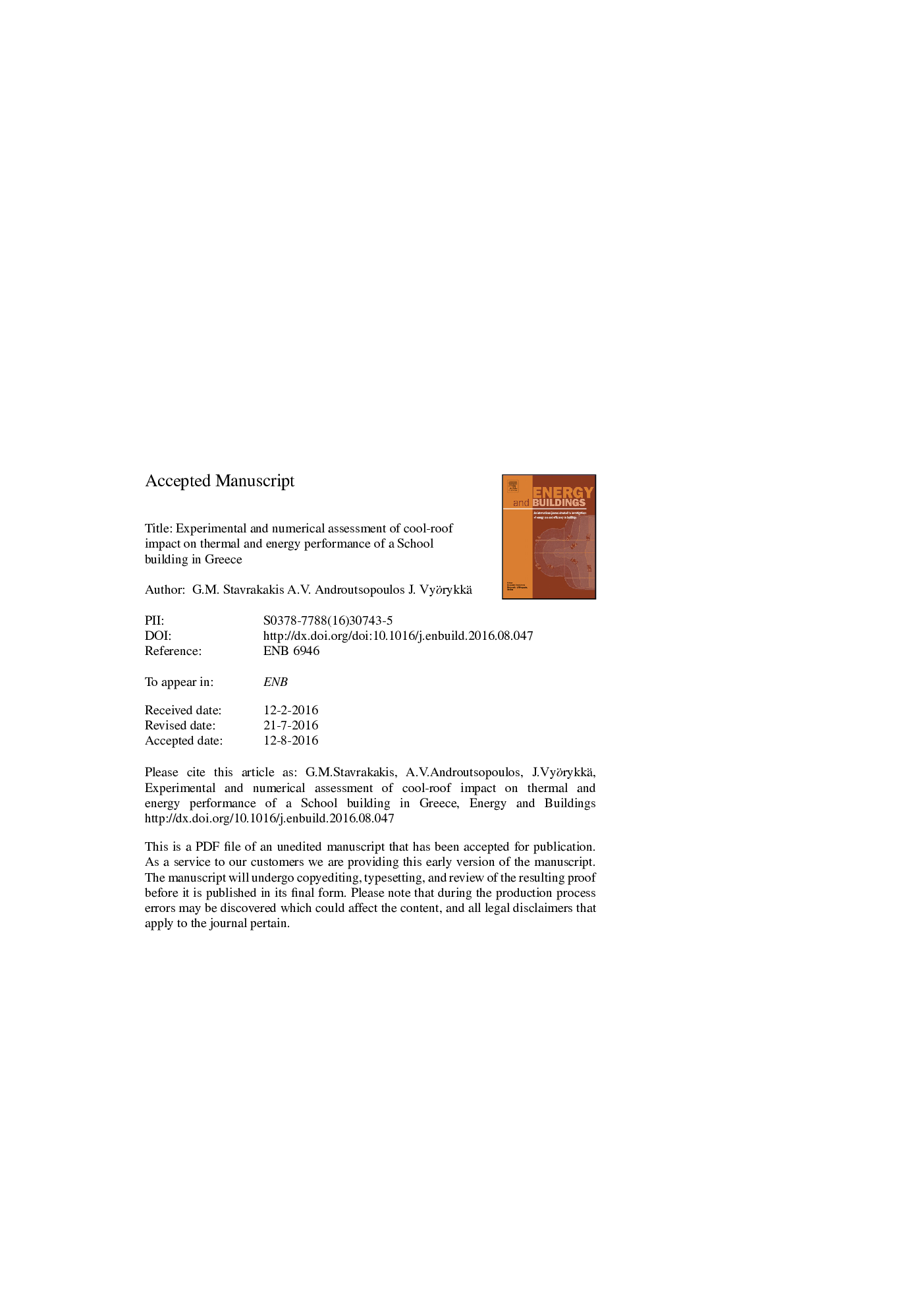| Article ID | Journal | Published Year | Pages | File Type |
|---|---|---|---|---|
| 4919576 | Energy and Buildings | 2016 | 40 Pages |
Abstract
This paper presents an investigation of cool-roof impacts on thermal and energy performance of a School building located in Athens, Greece. The research work refers to a month recording of thermal performance indicators (TPIs) in selected classrooms, namely indoor air- roof- and ceiling surface- temperature. Thermal inspections also included roof thermal-camera scanning and reflectance measurements of exterior building surfaces. Thermal impacts were assessed in terms of comparisons of TPIs with the ones obtained by the same procedure in a nearby twin building. The impact of the cool roof on building energy performance and thermal comfort was assessed through dynamic energy simulations. Model calibration is achieved through comparisons of simulated indoor air temperature with the measured one in both the ex-ante and ex-post condition. Two summer-conditioning cases were analyzed, namely “ceiling fans with no cooling systems” (actual condition) and “air-conditioning split units with no ventilation systems”. For the building block below the cool roof it was found that: in the former case, the energy consumption for ventilation is reduced by at least 25% with an up to 3% increase of comfort operating hours, at the expense of a 12% heating penalty in winter. In the latter case, the energy consumption for cooling is reduced by at least 18% with a similar increase of comfort hours, compensating energy-consumption increase for heating in winter. It is concluded that the cool roof is an efficient solution for School buildings in warm climates as it improves summer thermal comfort and ensures annual energy savings when heat pumps are used for cooling purposes.
Keywords
Related Topics
Physical Sciences and Engineering
Energy
Renewable Energy, Sustainability and the Environment
Authors
G.M. Stavrakakis, A.V. Androutsopoulos, J. Vyörykkä,
